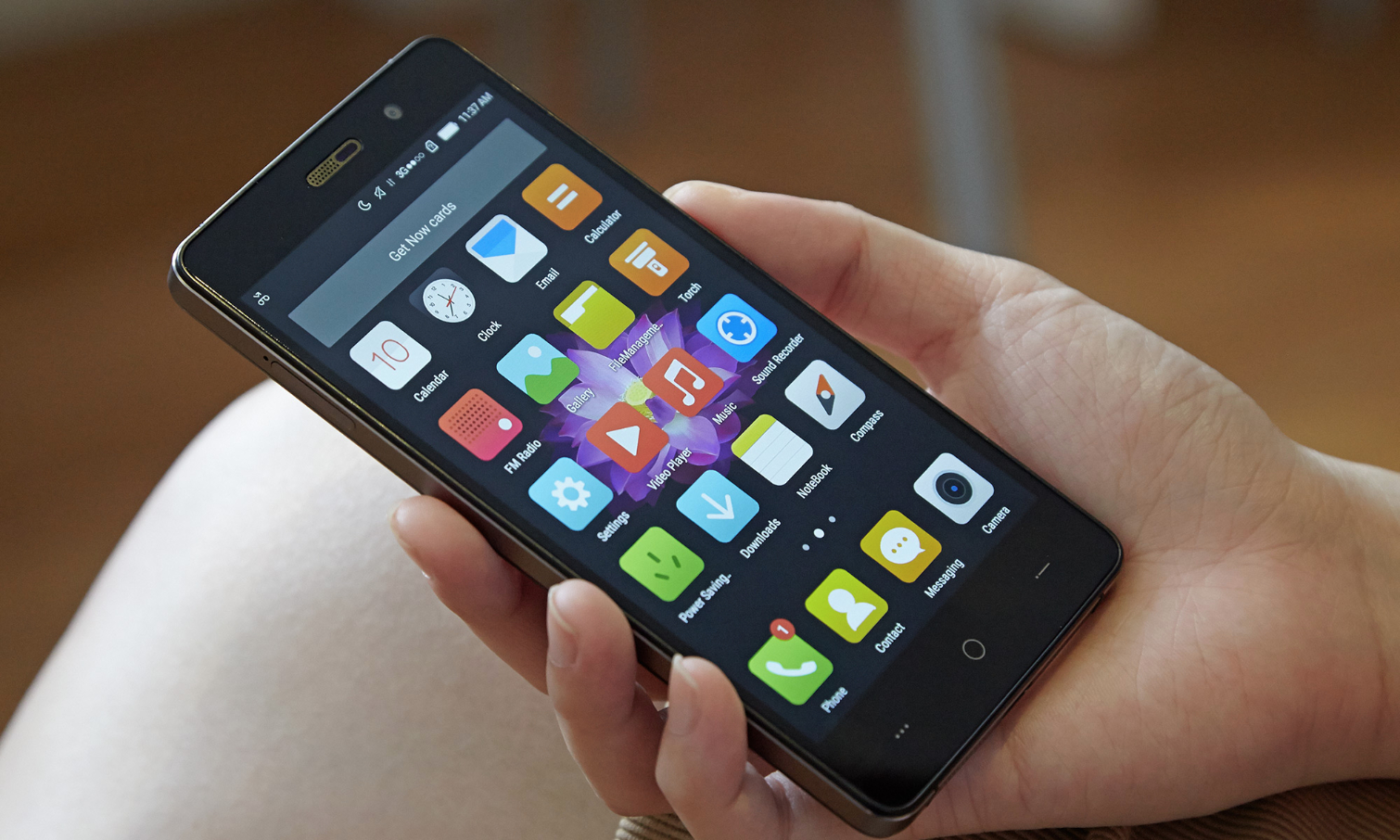Tom's Guide Verdict
As appealing as the K5's low price tag and long-lasting battery are, it makes too many compromises to outshine more compelling budget Android phones.
Pros
- +
Bright, easy-to-read screen
- +
Adequate photos in good light
- +
Excellent battery life
Cons
- -
Design and interface feel like iPhone knockoffs
- -
Strange button placement
- -
Camera struggles outside ideal conditions
Why you can trust Tom's Guide
The KPhone K5 comes close to joining the growing ranks of budget-priced Android phones offering better-than-average features at a low price. The K5 boasts outstanding battery life as well as a respectable screen and camera, all in a phone that sells for less than $200. But needless copying of the iPhone's design and interface — a problem that still plagues the Android ecosystem — mar what is otherwise a decent experience.
Design: Too Much Like an iPhone
You can't help but notice one thing when you take a first glance at the K5: It's obviously taken some, er, inspiration from the look of previous-generation iPhones.
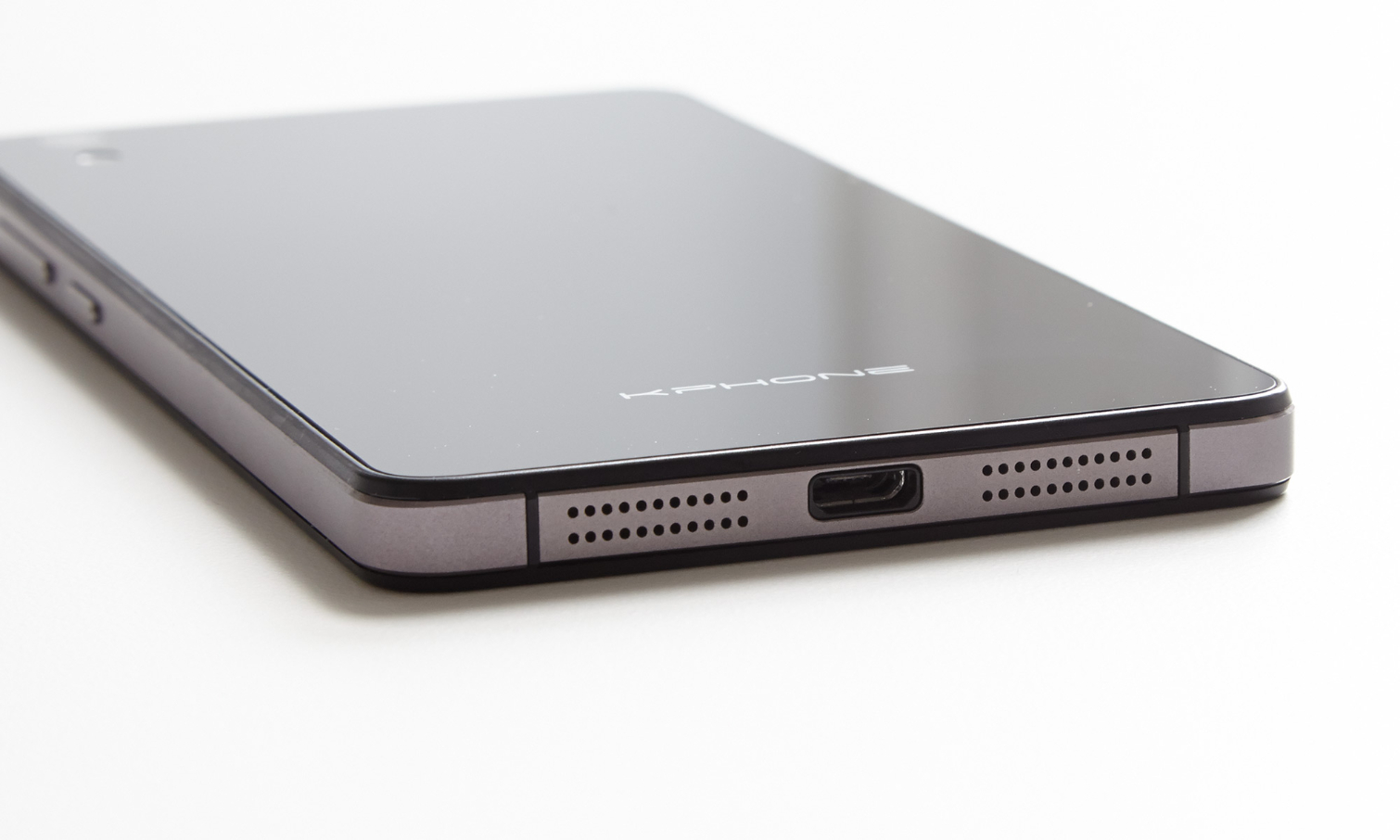
The black antenna lines, the placement of the microUSB port, the speaker grille design and that black body with a metallic trim are all straight from the iPhone 5. If imitation is truly the sincerest form of flattery, then KPhone thinks quite highly of Apple's design.

Look closer at the 5.59 x 2.75 x 0.29-inch phone, however, and you'll see some distinct differences. The K5 has three capacitive buttons, which extend the length of the bezel but maximize the screen real estate compared to other Android devices. Other low-priced phones, such as the $349 Google Nexus 5X and the $180 Motorola Moto G, rely on Android's on-screen navigation.
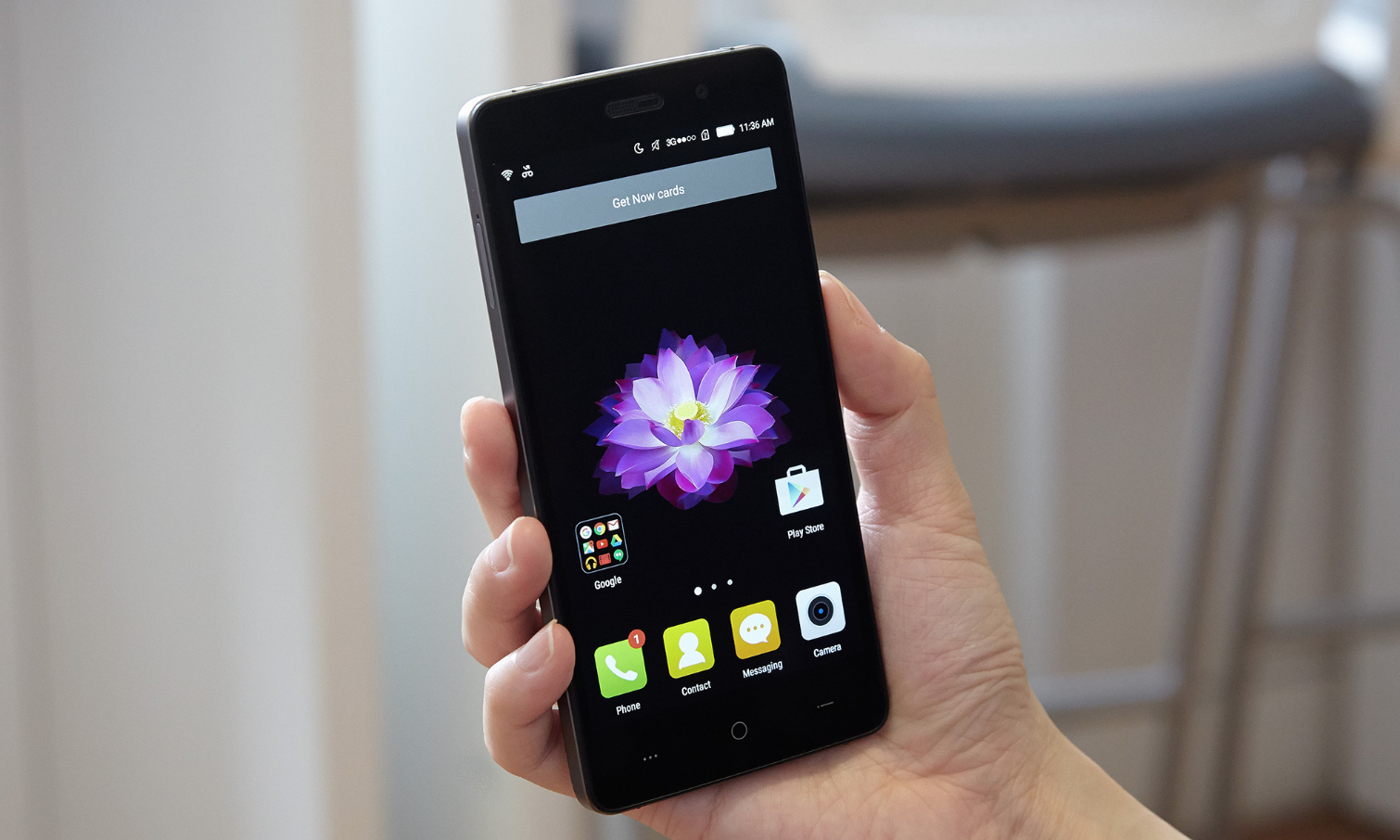
Compared to the stock Android interface, KPhone changes the locations of these buttons. The back button is on the right instead of on the left, and the left button brings up a menu for whatever app you're using. Instead of including a multitasking button, the K5 makes you double-tap the home button to move between apps, just as you would on an iOS device.
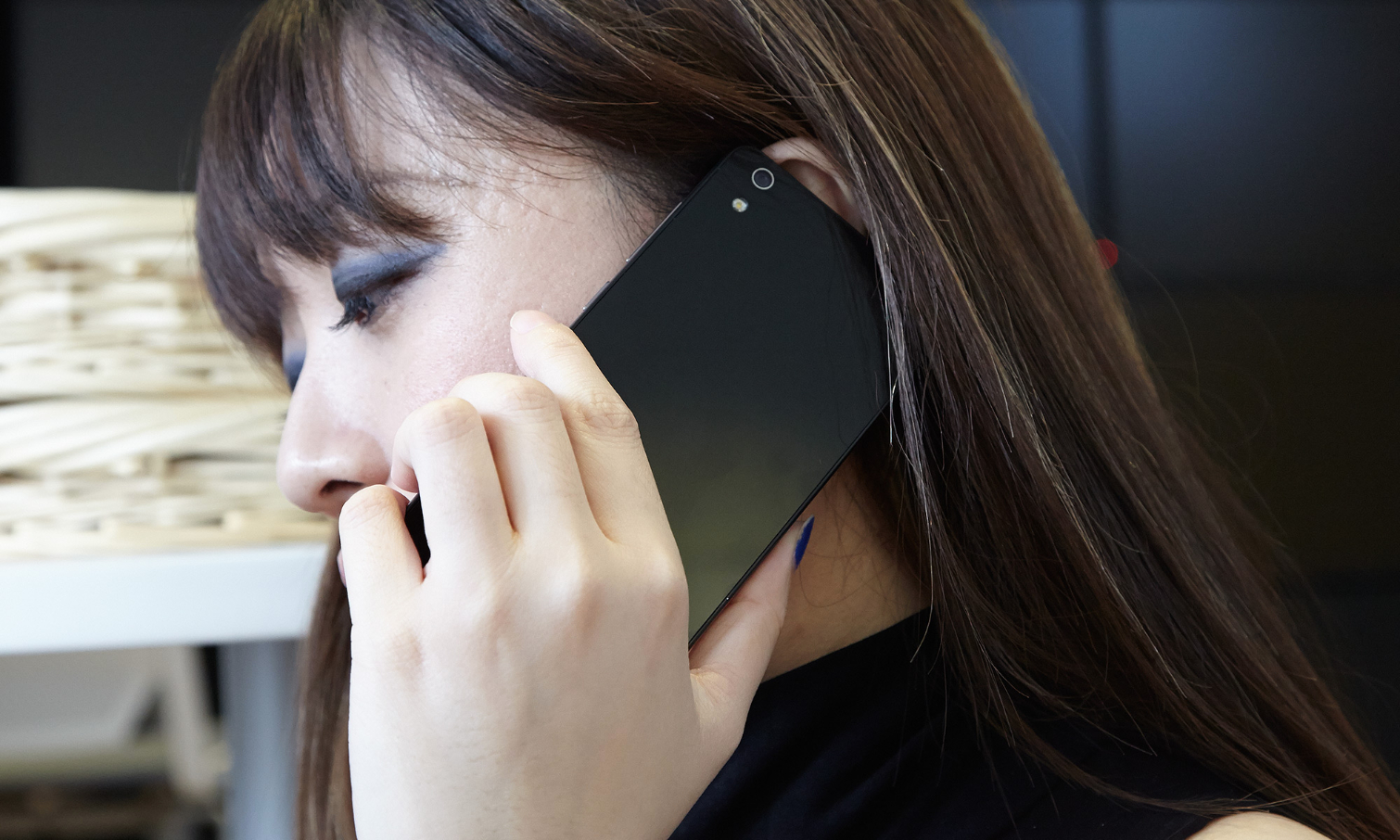
After using the compact KPhone for a few days, I see why Apple is going small with the iPhone SE. It's rather refreshing to be able to use a phone in one hand and not feel like you're lugging around a minitablet. At 4.7 ounces, the K5 feels pretty good, though you'd be wise to pick up a case, as it's a little on the slippery side. Only the 4.8-ounce Nexus 5X comes close to the K5's light weight.
MORE: Best Cheap Unlocked Smartphones
Get instant access to breaking news, the hottest reviews, great deals and helpful tips.
KPhone K5 Specs
Carrier: Unlocked
Display (main): 1280 x 720 pixels, 294 ppi
OS Family: Android
Operating System: Android 5.1.1
CPU: Qualcomm MSM8916
RAM: 2GB
Internal Memory: 16GB
Memory Expansion Type: N/A
Bluetooth Type: 4.0
Front Camera Resolution: 5 megapixels
Camera Resolution: 13 megapixels
Ports: dual micro SIM, micro USB, 3.5mm headphone
Display and Audio: Bright Screen, Underwhelming Colors
The K5's 5-inch screen is nice and bright — certainly decent enough to look at for hours of social media, email or Web browsing. Our tests measured the screen at 478.1 nits, a little bit brighter than the average smartphone (428 nits) and in line with the Moto G (463 nits) and the Nexus 5X (453.6). Huawei's similarly priced Honor 5X is brighter, at 529 nits. But the K5's screen definitely takes more of a hit in the sun than other Android phones I've tried. If you need to use the phone outside, you'd better find a shaded area nearby.
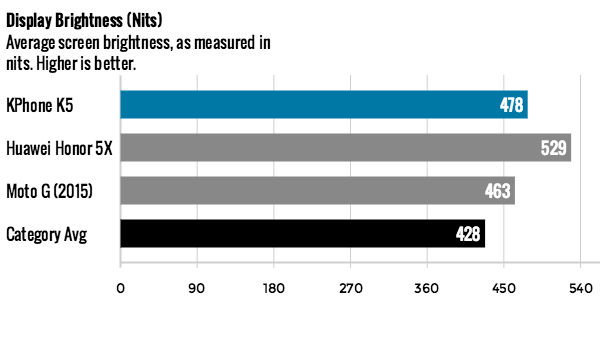
The colors on the K5's 1280 x 720 display weren't as vibrant as those on other phones, which became apparent when I watched a video on YouTube. When I fired up the video for Taylor Swift's "Bad Blood" (hey, it's catchy), the skin tones of Tay and her squad weren't quite true-to-life. Our tests bore that out: The K5's screen reproduced 97.6 percent of the sRGB color spectrum, which is well below the smartphone average (119.05 percent). For color accuracy, it notched a Delta-E rating of 0.85, which is better than the smartphone average of 3.07. (Numbers closer to 0 are better.)
The sound coming out of the speakers on the bottom of the K5 was respectable, but it reminded me why front-facing speakers are so much better on a phone. Turning up the volume all the way just made music sound louder, instead of amplifying the qualities of the sound in any noticeable way. Sorry, Weezer, your new track "California Kids" didn't quite sound the same on the K5.
Performance: Not a Standout
A quad-core Qualcomm Snapdragon 410 processor, like the one inside the K5, won't blow away any benchmark tests. And indeed, its performance on our tests was underwhelming. On Geekbench 3, which measures overall performance, the KPhone K5 notched 1,496, which is well below the average smartphone's score of 3,251. Compare that to a budget phone such as the Moto G (1,591), and the K5's result looks a little more respectable, though it still trails both the Nexus 5X (3,507) and the Honor 5X (2,990).
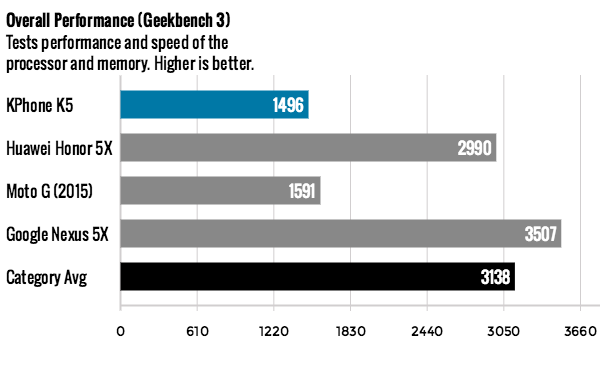
The K5 took 9 minutes and 45 seconds to convert a 204MB 1080p video to 480p using VidTrim. Both the Honor 5X (7:41) and the Moto G (8:24) pulled off the task in less time.
It was a similar story with graphics on the 3DMark Ice Storm Unlimited benchmark. The K5's score of 4,428 was well below the 15,235 average we've recorded for other smartphones. The Moto G scored slightly better, at 4,467, though both phones were behind the Nexus 5X and the Honor 5X.
MORE: Best Smartphones on the Market Now
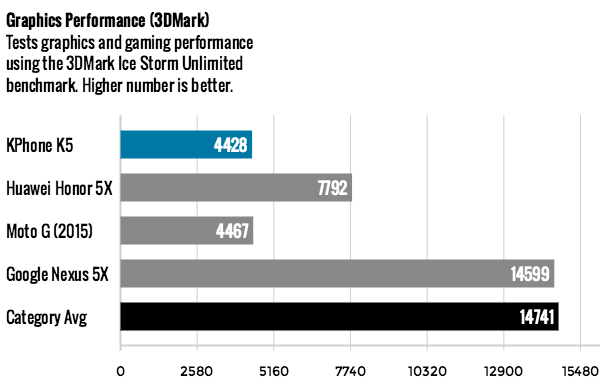
Still, for such a compact midrange device, the K5 felt like a solid performer in everyday use. I was able to multitask with relative ease, finding only a few hiccups along the way. The phone struggled with more intensive games, such as Hearthstone: Heroes of Warcraft, and on playback of some YouTube videos. And once I started to move more quickly from one task to another, things would start to stutter even more.
Cameras: Decent in Good Light
The K5's 13-megapixel rear camera does an acceptable job of capturing most moments, particularly in well-lit indoor settings or outdoor locations with enough sunlight. But I found the camera really struggled to focus at times, as I ended up with way more blurry images than when I tested the Moto G (let alone the Nexus 6P that I use as my personal phone).
A shot of ostriches at the zoo produced some nice detail on the bird's feathers, and there's a decent contrast between the brown leaves and wisps of green grass on the ground. But the images in the background aren't as sharp and are harder to distinguish.

A photo of a fountain managed to capture drops of water, and the colors of the fountain's tiles stood out, despite the shadows. But colors on the houses behind the fountain weren't nearly as sharp, and the edges of the homes looked fuzzy.

Moving inside, this photo of plants benefits from decent lighting. The different shades of green on the plants are easy to spot, and the camera faithfully recreated the pattern of the place mat the plants are resting on.
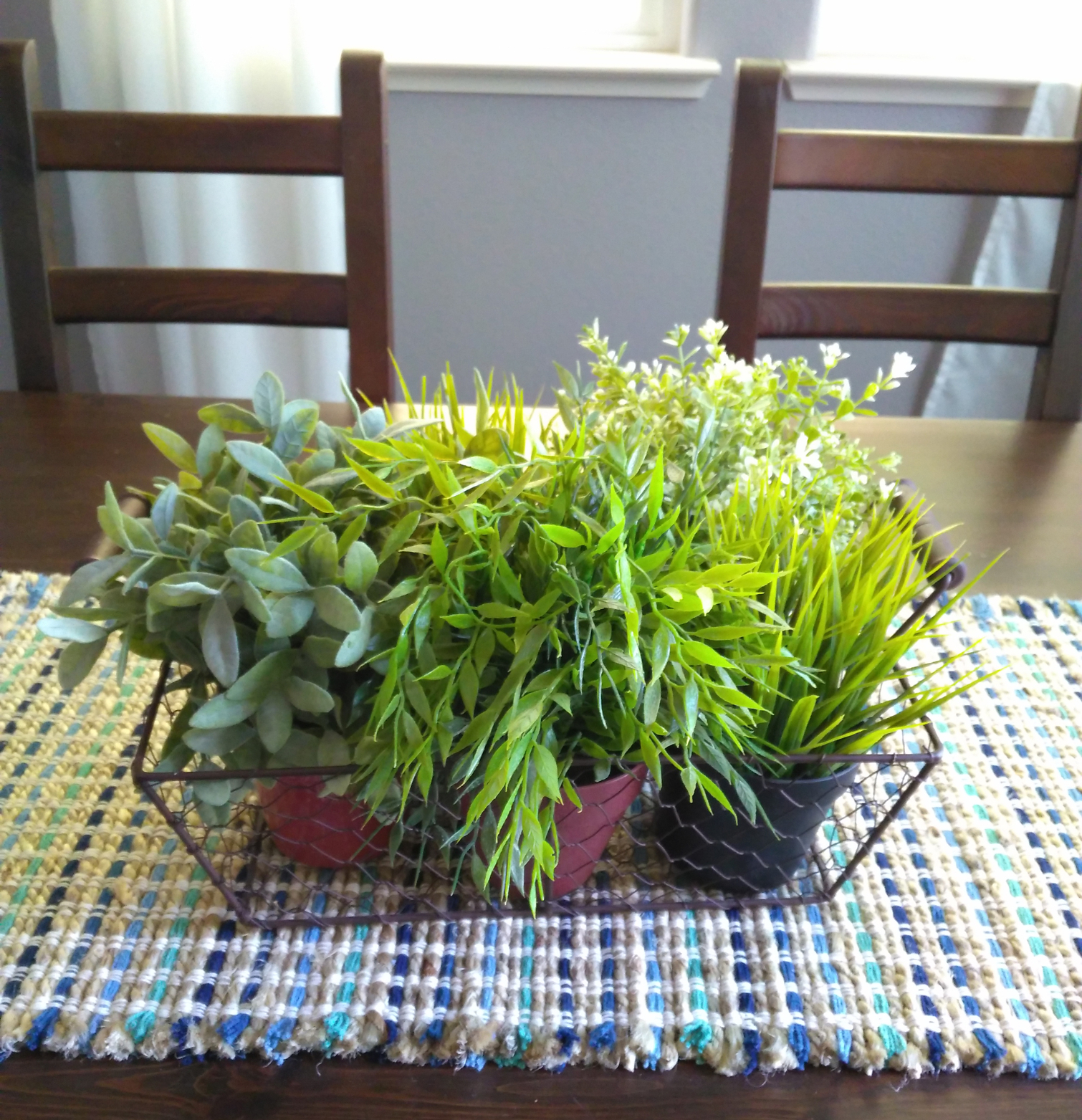
When it came time to use the rear flash, I wound up with an acceptable photo of a cat, even though the flash produced some notable shadows. The details of the cat's face were also washed out.

The rear camera shoots 720p with solid-looking output. But you'll quickly see why optical image stabilization is an important feature for smartphone cameras. As my video of the somewhat-friendly birds demonstrates, a camera can be very unforgiving even when you're doing your best to hold it steady. Most of my videos looked straight out of the Blair Witch Project.
Selfies are now a fact of life, so any smartphone that wants serious consideration needs to perform in this department. The K5 does a respectable job when you're in a well-lit room.

But the 5-MP front camera really struggles in low light, with images appearing really washed out, and there's no flash on the front camera to bail you out. If you take most of your selfies while on the go and outdoors, the K5's camera could be enough to get the job done, but you'll want to apply some editing magic using some of the included editing tools.
Battery Life: Long-Lasting Performer
Other K5 specs may fail to wow, but battery life is one area where the KPhone excels. Maybe it's the upside to a small screen with middling specs, but I was able to get through an entire day without the need to recharge the phone.
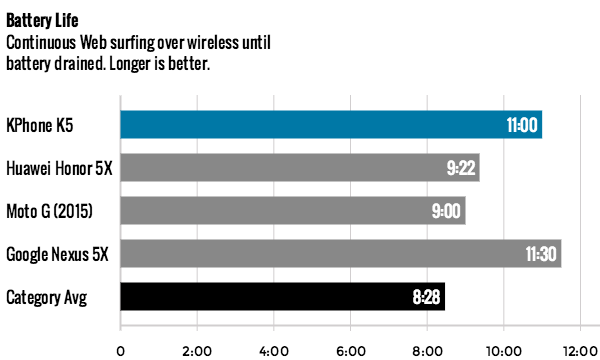
On our battery test, which involves continuous Web surfing over T-Mobile's 4G LTE network at 150 nits of brightness, the K5 lasted 11 hours. That puts the K5 in the ranks of the longest-lasting smartphones we've tested. The Nexus 5X lasts 30 minutes longer, but the K5's endurance tops that of the average smartphone (8 hours and 27 minutes), as well as the 9-hour times turned in by the Moto G and the Honor 5X.
Software: iOS Meets Android
KPhone gets some kudos for making a minimalist skin that is easy to navigate. A slide-down menu includes key actions, such as enabling or disabling Wi-Fi, Airplane Mode, a flashlight and Bluetooth. On the downside, the phone's Settings menu separates features into General and All, which only makes it more difficult to find the right setting.
You'll also notice a continuation of the mimic-the-iPhone theme that started with the K5's exterior look. The dialer, calendar, notebook and music apps are blatant rip-offs from iOS. The same goes for the design of the settings and the grid layout that dons the home screen in KPhone's touchOS. Fortunately, you can change this up with a custom launcher, with the Google Now Launcher highly recommended.
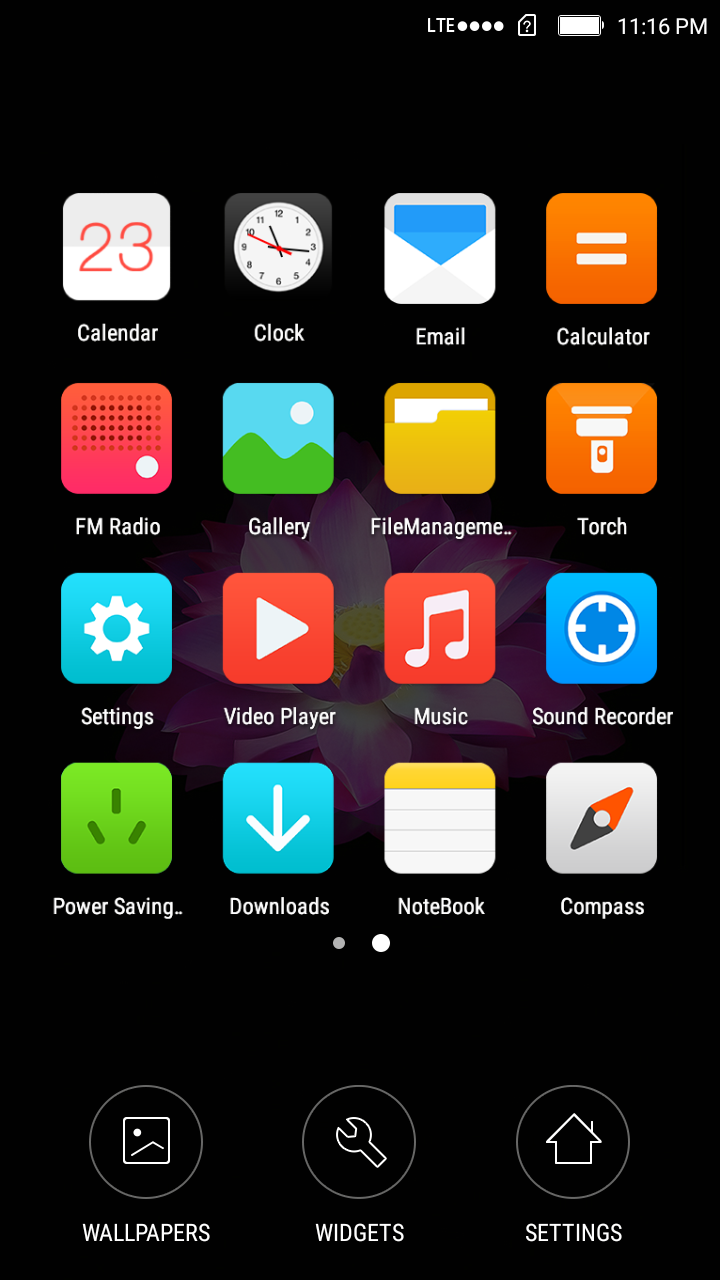
The whole iPhone adoration is really unnecessary. Google has crafted a good design language of its own, and there's no reason for Android phones to pretend to be something else. Let it be an Android phone, and play up the connection to Google's design and services, which are key parts of the strength of Android anyway.
MORE: The Best Android Apps to Try Today
Another key question involves Android updates. The K5's version of Android is already a version behind — it has 5.1 instead of the current Marshmallow build of 6.0. We don't know KPhone's track record for timely Android updates, but starting behind isn't a good sign.
Bottom Line
The K5 might make a decent choice for bargain hunters who place a premium on battery life and don't mind underwhelming performance and a so-so camera. But you have better choices available in the budget category. If price is your primary concern, the Moto G's a better choice because of its slightly better performance and better screen. If you're willing to spend a little more, consider the Nexus 5X, which can surpass the K5's impressive battery life while adding a fingerprint reader and a more recent version of Android, plus the promise of rapid updates directly from Google.
If nothing else, KPhone shows us how quickly the cost to produce a quality smartphone has dropped. But your willingness to suffer through a ho-hum experience for that cost is definitely another matter.
Derek Walter is a freelance technology writer whose work has appeared on Fast Company, IGN, TechRadar, PCWorld, and more. At Tom's Guide, he specializes in covering Apple and Android phones. He is also the author of Learning MIT App Inventor, a guide for creating Android apps, and is the founder of Walter Media.
